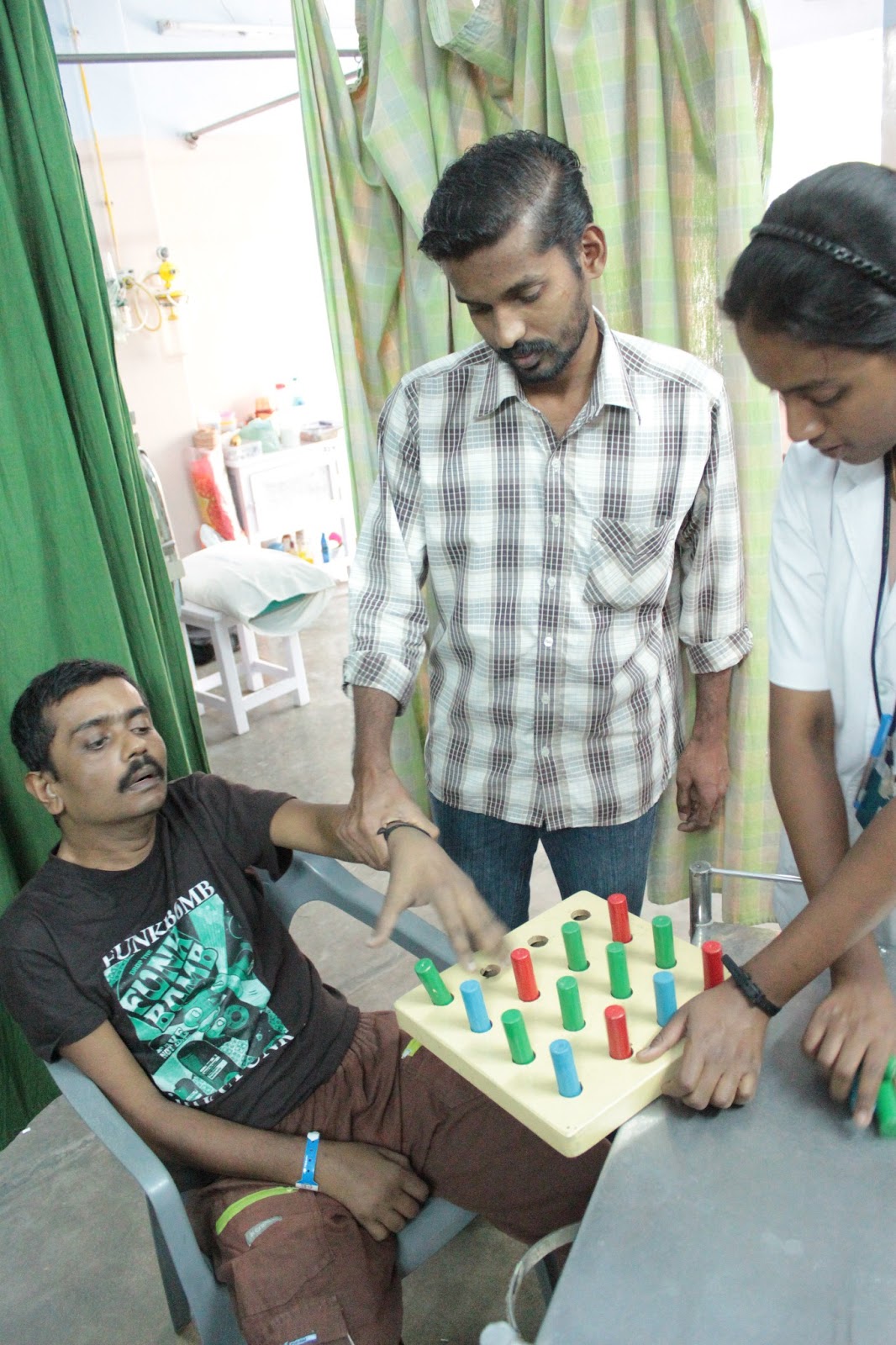 |
| This is the Occupational Therapy gym in Q3 ward. It is not uncommon to have 20+ people in here for therapy (patients + family members.) |
 |
| A corner area of the OT gym in Q3. |
 |
| Another shot of the OT gym. |
 |
| I was able to sneak a few photos of some of the empty beds on the ward just to give you an idea of the conditions of the rooms. A little bare, but the staff makes it work well. |
 |
| Another shot of a general ward bed. |
 |
| Another bed in a different bay of the general ward. |
The main difference I saw was not in the injury or
assessment of injury, but in the treatment of the injury. The end goal of
therapy here is different for a number of cultural and financial reasons. The
largest influence on treatment goals is the family. Have you heard this before?
It is true. The family bathes, toilets, dresses, and feeds the patient if they
cannot do it themselves. It is a cultural thing. Families come together to
provide for the patient. Independence then becomes a matter of the family unit,
not just the patient.
Financial means also impact the treatment goals, especially
for those of lower socio-economic status. Family income is often reduced when
someone becomes injured. This is often not just a reduction of one income, but
also of the family members that now care for the patient rather than work. With
a shortage in finances, the means to purchase equipment is also not there.
Wheelchairs and adaptive devices are difficult to afford, thus treatment and
discharge planning is done without relying on such things.
Literacy also impacts treatment plans and goals. Many of the
patients in Q3 ward were being treated for grade three and four pressure sores.
It seems like it is a challenge to get patients and families to understand the
importance of skin care and pressure relief for patients with spinal cord
injuries. Some of the therapists I worked with mentioned literacy when I asked
about the high prevalence of pressure sores.
Treatment for patients with spinal cord injuries in the Q3
ward follows this general pattern. They are taught upper extremity exercises to
promote the ability to engage in pressure relief at least once every twenty
minutes. The patient and family are taught positional changes in bed to prevent
pressure sores; changes are to be made every two hours. Patients and families
are taught to rub Neem Oil over the patients insensate limbs to prevent rats
and bugs from compromising skin integrity when they are lying on their mats on
the mud floors of their homes. (Neem Oil is bitter oil that prevents unwanted
guests from biting the skin.) Education is provided on skin care. Positional
tolerances are also part of treatment for spinal cord patients, depending on
whether or not they have healing pressure sores.
 |
| This patient was engaging in push-ups to maintain upper extremity strength to increase independence in functional mobility upon discharge. |
Treatment for patients with brain injuries also follows a
little bit of a pattern. In Q3 they use functional coma stimulation and
traditional coma stimulation. Traditional coma stimulation is using the five
sense to evoke a response, and as the patients becomes more alert the responses
become more appropriate. Functional coma stimulation is using objects and
passive range of motion to increase awareness and alertness and stimulate the
ability to follow commands.
In Q3, the number one goal of patient care is to get them
medically stable. Therapy is administered to prevent decline (contractures,
decreased muscle strength, etc.) and maintain function. If gains are made, all
the better. Once the patients are stable, they are generally transferred to the
rehabilitation institute where therapy becomes the focus.
I learned a lot during the last week. The differences and
similarities in occupational therapy services continue to intrigue me. I am
looking forward to working in the rehabilitation institute towards the end of
my posting at CMC. I will then get to see many of the same patients I saw in A2
and Q3, only with more focus on rehabilitation.



No comments:
Post a Comment